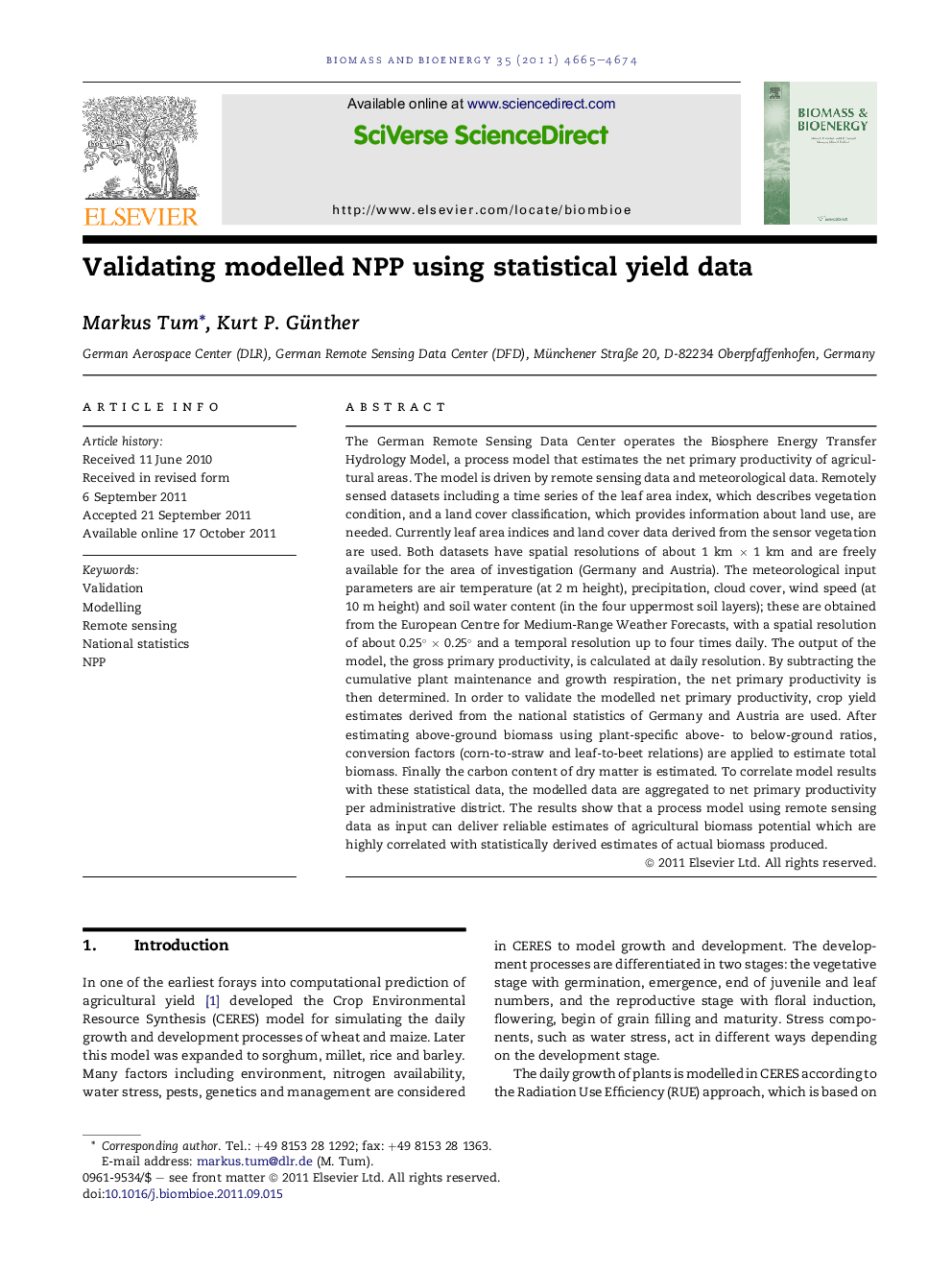| کد مقاله | کد نشریه | سال انتشار | مقاله انگلیسی | نسخه تمام متن |
|---|---|---|---|---|
| 677803 | 888623 | 2011 | 10 صفحه PDF | دانلود رایگان |

The German Remote Sensing Data Center operates the Biosphere Energy Transfer Hydrology Model, a process model that estimates the net primary productivity of agricultural areas. The model is driven by remote sensing data and meteorological data. Remotely sensed datasets including a time series of the leaf area index, which describes vegetation condition, and a land cover classification, which provides information about land use, are needed. Currently leaf area indices and land cover data derived from the sensor vegetation are used. Both datasets have spatial resolutions of about 1 km × 1 km and are freely available for the area of investigation (Germany and Austria). The meteorological input parameters are air temperature (at 2 m height), precipitation, cloud cover, wind speed (at 10 m height) and soil water content (in the four uppermost soil layers); these are obtained from the European Centre for Medium-Range Weather Forecasts, with a spatial resolution of about 0.25° × 0.25° and a temporal resolution up to four times daily. The output of the model, the gross primary productivity, is calculated at daily resolution. By subtracting the cumulative plant maintenance and growth respiration, the net primary productivity is then determined. In order to validate the modelled net primary productivity, crop yield estimates derived from the national statistics of Germany and Austria are used. After estimating above-ground biomass using plant-specific above- to below-ground ratios, conversion factors (corn-to-straw and leaf-to-beet relations) are applied to estimate total biomass. Finally the carbon content of dry matter is estimated. To correlate model results with these statistical data, the modelled data are aggregated to net primary productivity per administrative district. The results show that a process model using remote sensing data as input can deliver reliable estimates of agricultural biomass potential which are highly correlated with statistically derived estimates of actual biomass produced.
► Using the vegetation model BETHY/DLR yearly NPP is modelled (1 km spatial resolution).
► Validation of biophysical model revealed accuracy of about 8–17% for agriculture.
► Slight overestimation in comparison to calibrated model results (15%).
► ECMWF does not represent drought events as happened in 2001 in Austria.
Journal: Biomass and Bioenergy - Volume 35, Issue 11, November 2011, Pages 4665–4674